Resident Crews of Salyut 6
![]()
Salyut 6 |
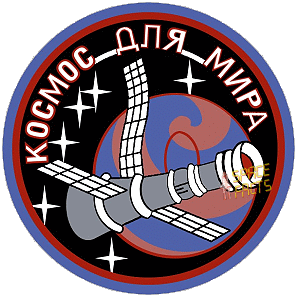 |
 |
|
alternative crew photo |
alternative crew photo |
alternative crew photo |
alternative crew photo |
alternative crew photo |
![]()
Crew, launch- and landing data
| No. | Nation | Surname | Given names | Position | Spacecraft (launch) |
Launch date |
Launch time |
Spacecraft (landing) |
Landing date |
Landing time |
Mission duration |
Orbits |
| 1 | Kovalyonok | Vladimir Vasiliyevich | Commander | Soyuz 29 | 15.06.1978 | 20:16:45.026 UTC | Soyuz 31 | 02.11.1978 | 11:04:17 UTC | 139d 14h 47m 32s | 2203 | |
| 2 | Ivanchenkov | Aleksandr Sergeyevich | Flight Engineer | Soyuz 29 | 15.06.1978 | 20:16:45.026 UTC | Soyuz 31 | 02.11.1978 | 11:04:17 UTC | 139d 14h 47m 32s | 2203 |
Backup Crew
| No. | Nation | Surname | Given names | Position |
| 1 | Lyakhov | Vladimir Afanasiyevich | Commander | |
| 2 | Ryumin | Valeri Viktorovich | Flight Engineer |
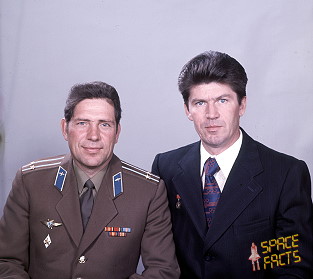 |
alternative crew photo |
Expedition Report
|
Launch from the Baikonur Cosmodrome and
landing with Soyuz
31 spacecraft 140 km southeast of Dzheskasgan. Following a one-day solo flight Soyuz 29 docked with Salyut 6 on June 16, 1978. The cosmonauts became the second resident crew of Salyut 6. The space station had been vacant for three months since the record-breaking mission of Soyuz 26 ended after 96 days. Upon arriving at Salyut 6, Vladimir Kovalyonok and Aleksandr Ivanchenkov switched on the station's air regenerators and thermal regulation system, and activated the water recycling system to reprocess water left aboard by the first resident crew. De-mothballing Salyut 6 occurred simultaneously with the crew's adaptation to weightlessness, and required about one week. On June 19, 1978 Salyut 6 was in a 368 km by 338 km orbit. Onboard temperature was 20°C, and air pressure was 750 mm/Hg. Soon after this, Vladimir Kovalyonok and Aleksandr Ivanchenkov performed maintenance on the station's airlock, installed equipment they brought with them in Soyuz 29's orbital module, and tested the station's Kaskad orientation system. The station operated in gravity-gradient stabilized mode June 24, 1978 - June 26, 1978 to avoid attitude control system engine firings which could cause interference with a 3-day smelting experiment using the Splav-01 furnace. The previous crew installed the furnace in the intermediate compartment so it could operate in vacuum. After activating the stations life systems (air regenerators and thermal regulation system, the water recycling system), they performed maintenance on the station's airlock, installed equipment and tested the station's Kaskad orientation system. During the mission, the cosmonauts conducted numerous scientific experiments in the fields of medicine and materials science. At the time, the station was in an orbit exposed to the sun's light for 24 hours a day. This happens twice a year when the plane of the station's orbit faces the sun. The resident crew was visited by Intercosmos flights of Soyuz 30 (June 28, 1978). Miroslaw Hermaszewski, the second Intercosmos cosmonaut, flew to Salyut 6 with Pyotr Klimuk. His experiment program stressed life sciences, Earth observations, and study of the aurora borealis. Progress 2, the second unmanned supply tanker to dock with a manned space station, arrived at Salyut 6 on July 09, 1978. Fifty days of supplies were on board, including 200 liters of water, 250 kg (551 lb) of food, the Kristall furnace, 600 kg (1,323 lb) of propellant, air re-generators, computer sub-systems, replacement parts, film and mail. It took the crew a week to unload the vehicle. On July 19, 1978, the tanker refueled the station, then it was filled with used equipment and trash and sent into a destructive de-orbit on August 04, 1978. An EVA was performed on July 29, 1978 by Aleksandr Ivanchenkov (2h 05m). Vladimir Kovalyonok made an SEVA. Forty-five days into their 140-day stay on Salyut 6, Vladimir Kovalyonok and Aleksandr Ivanchenkov don the Orlan- D suits first worn by Georgi Grechko and Yuri Romanenko. They then depressurized the transfer compartment and open the hatch in its side, starting the first full-emergence EVA of the Soviet space program since 1969. The transfer compartment was located at the front of the Salyut 6 station. The 2-m-diameter (6.56-ft-diameter) cylindrical compartment included a round hatch leading out onto the station's port side. An air-tight hatch at the front separated the compartment from the docked Soyuz, while another at the rear sealed off the 4.15-m-diameter (13.6-ft-diameter) cylindrical work compartment. The transfer compartment contained valves to spill its air into space; valves to refill it with air from the work compartment; control and display panels; connectors for umbilicals providing electricity and communications to the suits; anchoring points for restraints and tethers; and storage compartments for tethers, foot restraints, two Orlan-D suits, and other EVA equipment. Handrails on the station's exterior converged at the airlock hatch. Aleksandr Ivanchenkov positioned himself on the Yakor ("anchor") foot restraint near the airlock hatch, while Vladimir Kovalyonok floated with his feet in the transfer compartment. The cosmonauts rested during the 35-minutes orbital night, and were treated to the sight of a brilliant meteor burning up below them in Earth's atmosphere. Aleksandr Ivanchenkov removed three space exposure cassettes launched on Salyut 6's exterior and handed them to Vladimir Kovalyonok for stowage in the transfer compartment. He then replaced meteoroid dust collectors and installed radiation sensors. Aleksandr Ivanchenkov photographed the Black Sea, Kazakhstan, and China. The Tsentr Upravleniya Polyotami ("Flight Control Center") (TsUP) in Kaliningrad, outside Moscow, ordered the spacewalkers to return inside just before Salyut 6 passed from radio range. Vladimir Kovalyonok decided while out of radio contact that they could stretch the EVA 20 minutes longer to enjoy the view of Australia's Great Barrier Reef and New Zealand. After the EVA, the cosmonauts used air from the Progress 2 logistic resupply ship's tanks to replace that vented when they depressurized the transfer compartment. Using Progress freighters to make up EVA air loss becomes standard practice. Progress 3 was launched August 08, 1978 and docked with Salyut 6 two days later. With it, the station's orbit was boosted to 244 x 262 km (163 mi). Supplies aboard the tanker included strawberries, onions, milk, 450 kg (992 lb) of air, 190 liters of water, fur boots, newspapers, film, letters and equipment. Additionally, Vladimir Kovalyonok's guitar was on board. It was the first tanker not to carry a fresh supply of propellant for the station, as Progress 2 had so recently replenished Salyut 6's tanks. The Progress was de-orbited August 23, 1978. The second visiting crew arrived on August 26, 1978 with the crew of Valeri Bykovsky and Sigmund Jähn on board Soyuz 31. Sigmund Jähn's program focused on materials sciences, Earth observations, and life sciences. The visiting crew swapped craft with the resident crew, and tested the Soyuz 29's engines on September 02, 1978. Seat liners were exchanged the next day, the craft undocked, and Valeri Bykovsky and Sigmund Jähn returned to Earth. On September 07, 1978 the crew also relocated the Soyuz 31 spacecraft from the aft port of the station to the front port of the station for the first time. They undocked Soyuz 31 and backed off to 100-200 m distance. Then the TsUP commanded Salyut 6 to rotate laterally 180°, placing the front port before the waiting Soyuz 31 spacecraft. The operation freed the aft port for additional Progress freighters. Later on, this became a routine procedure. Experiments continued on the station, and on September 15, 1978, the cosmonauts took their second showers. By October 1978, some 3,000 photographs had been taken and some 50 experiments carried out. The third Progress tanker for the crew arrived at Salyut 6's aft port on October 06, 1978. Progress 4 had 1,300 kg (2,866 lb) of equipment aboard, including air canisters, clothes, magazines and food. Vladimir Ivanchenkov's wife had snuck some brandy-filled chocolates into a box of candy, and when the crew opened the box, the chocolates flew out. It took them two hours to retrieve the candies. Refueling was completed October 13, 1978, two burns were used to raise the station's orbit on October 20, 1978, and the Progress was de-orbited October 26, 1978. The crew exercised three hours a day in their final month in orbit. Experiments were transferred to Soyuz 31 on October 30, 1978, its engines were tested, and the station's interior was cleaned. The Soyuz spacecraft is composed of three elements attached end-to-end - the Orbital Module, the Descent Module and the Instrumentation/Propulsion Module. The crew occupied the central element, the Descent Module. The other two modules are jettisoned prior to re-entry. They burn up in the atmosphere, so only the Descent Module returned to Earth. Having shed two-thirds of its mass, the Soyuz reached Entry Interface - a point 400,000 feet (121.9 kilometers) above the Earth, where friction due to the thickening atmosphere began to heat its outer surfaces. With only 23 minutes left before it lands on the grassy plains of central Asia, attention in the module turned to slowing its rate of descent. Eight minutes later, the spacecraft was streaking through the sky at a rate of 755 feet (230 meters) per second. Before it touched down, its speed slowed to only 5 feet (1.5 meter) per second, and it lands at an even lower speed than that. Several onboard features ensure that the vehicle and crew land safely and in relative comfort. Four parachutes, deployed 15 minutes before landing, dramatically slowed the vehicle's rate of descent. Two pilot parachutes were the first to be released, and a drogue chute attached to the second one followed immediately after. The drogue, measuring 24 square meters (258 square feet) in area, slowed the rate of descent from 755 feet (230 meters) per second to 262 feet (80 meters) per second. The main parachute was the last to emerge. It is the largest chute, with a surface area of 10,764 square feet (1,000 square meters). Its harnesses shifted the vehicle's attitude to a 30-degree angle relative to the ground, dissipating heat, and then shifted it again to a straight vertical descent prior to landing. The main chute slowed the Soyuz to a descent rate of only 24 feet (7.3 meters) per second, which is still too fast for a comfortable landing. One second before touchdown, two sets of three small engines on the bottom of the vehicle fired, slowing the vehicle to soften the landing. The crew set a new spaceflight record. The landing was covered live by Soviet television. They were mostly recovered in five days, fully recovered in 25. They were the first crew to have difficulty talking after returning to Earth. Despite all this, their condition was slightly better than the previous long-duration crew's. |
EVA data
| Name | Start | End | Duration | Mission | Airlock | Suit | |
| EVA | Ivanchenkov, Aleksandr | 29.07.1978, 04:00 UTC | 29.07.1978, 06:05 UTC | 2h 05m | Soyuz 29 | Salyut 6 | Orlan-D No. 34 |
| SEVA | Kovalyonok, Vladimir | 29.07.1978, 04:00 UTC | 29.07.1978, 06:05 UTC | 2h 05m | Soyuz 29 | Salyut 6 | Orlan-D No. 33 |
Relocations of Manned Spacecrafts
| Spacecraft | from | Undocking | Time UTC | to | Redocking | Time UTC |
| Soyuz 31 | Salyut 6 - aft port | 07.09.1978 | 16:37:37 | Salyut 6 - front port | 07.09.1978 | 11:21:30 |
Photos / Graphics
 |
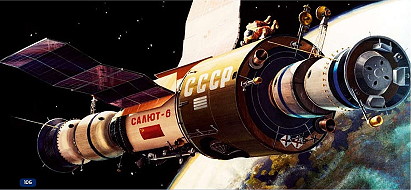 |
 |
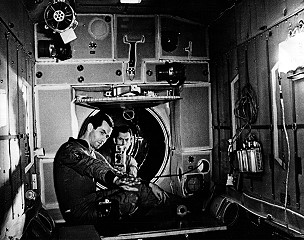 |
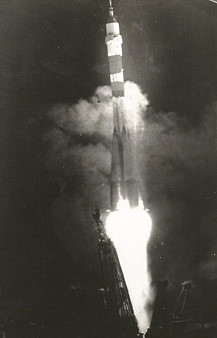 |
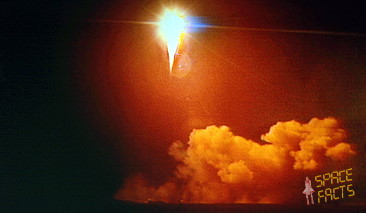 |
 |
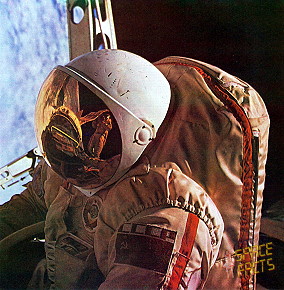 |
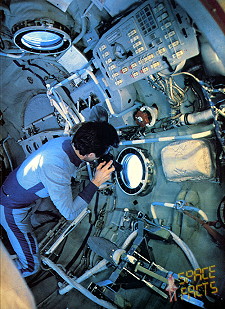 |
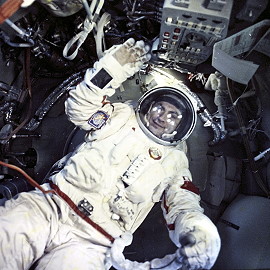 |
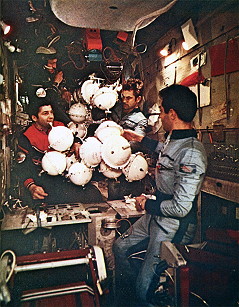 |
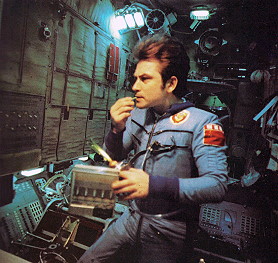 |
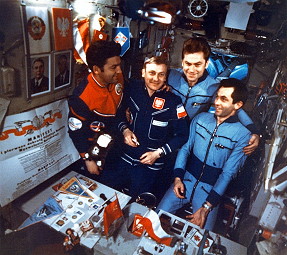 |
 |
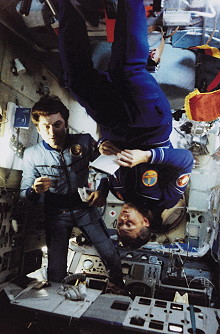 |
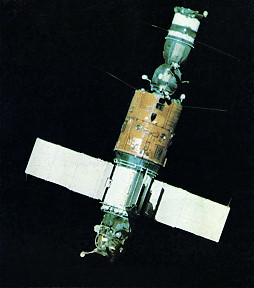 |
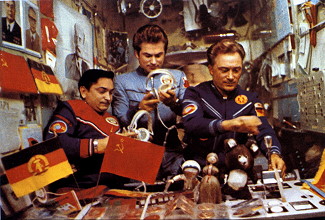 |
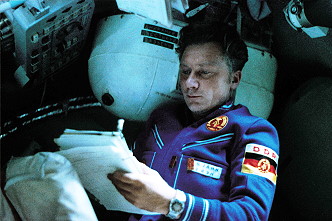 |
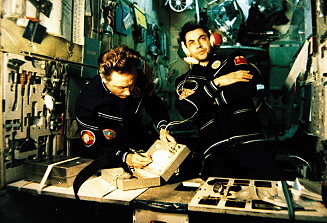 |
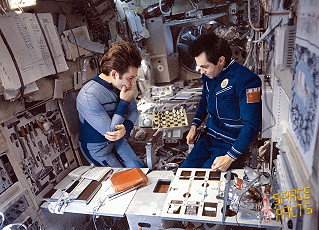 |
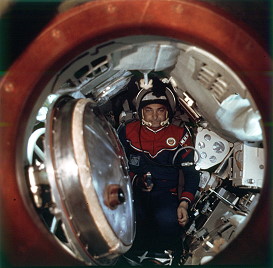 |
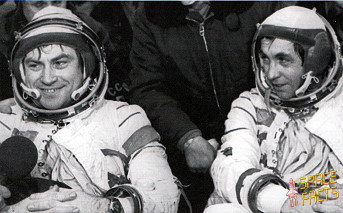 |
| © |  |
Last update on March 28, 2025.  |
 |